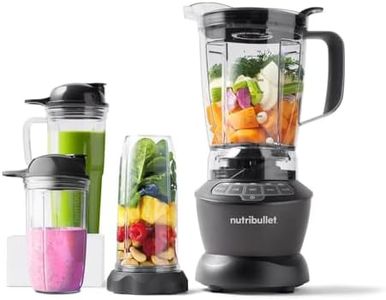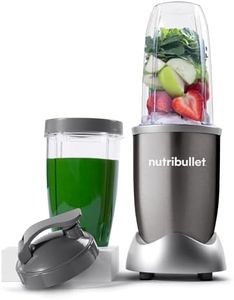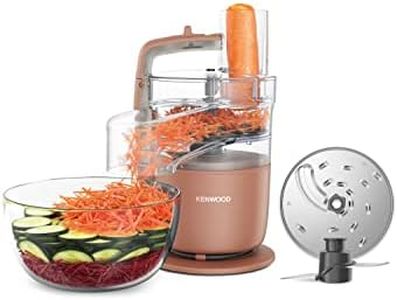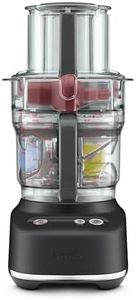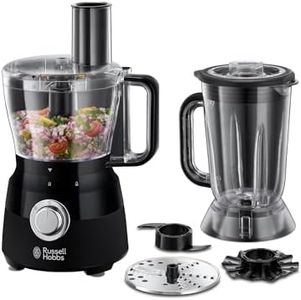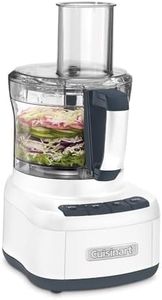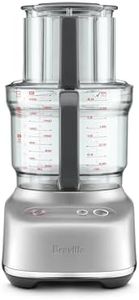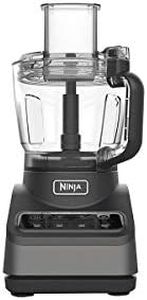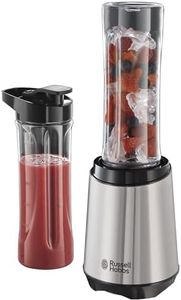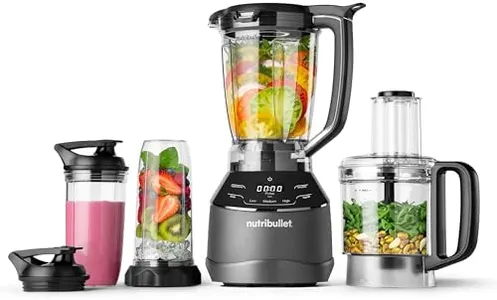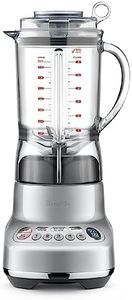We Use CookiesWe use cookies to enhance the security, performance,
functionality and for analytical and promotional activities. By continuing to browse this site you
are agreeing to our privacy policy
10 Best Food Processor Blender
From leading brands and best sellers available on the web.Buying Guide for the Best Food Processor Blender
Choosing a food processor-blender can really simplify your kitchen tasks, from chopping and slicing to making smoothies and soups. Finding the right one depends on how you’ll use it in your daily cooking, the kinds of recipes you like, and how much food you typically prepare at once. The goal is to pick a device that fits easily into your routine, is comfortable to use and clean, and can handle your favorite foods—whether that’s tough vegetables, dough, or soft fruit. Start by thinking about what you want to make most often and how much space you have on your countertop or in storage.CapacityCapacity refers to the size of the main bowl or jug and determines how much food or liquid you can process at one time. For single servings or small households, smaller capacities (around 3 to 5 cups) are usually sufficient and also save space. Medium capacities (around 7 to 10 cups) are great for couples or small families who regularly prepare meals at home. Larger bowls (over 10 cups) suit larger families, meal preppers, or anyone who cooks in large batches. Think about how many people you usually cook for and whether you often host big meals or parties.
Motor PowerMotor power tells you how strong the machine is, usually measured in watts. Lower-powered machines (under 500 watts) handle basic tasks like chopping and blending soft ingredients but might struggle with kneading dough or crushing ice. Medium power (500-800 watts) offers more versatility for regular use and can handle tougher ingredients. High-powered machines (over 800 watts) are best if you want to process hard vegetables, large quantities, or plan to use the machine for heavy-duty blending or mixing. Think about what you’ll make most—easy tasks like salsa or tough jobs like nut butters and doughs.
Blades and AttachmentsBlades and attachments determine what tasks the machine can handle. Basic processors come with a chopping blade and a slicing/shredding disc. More advanced models include dough blades, whisk attachments, and specialized grating discs. Consider what you want to do—if you’ll just chop vegetables and make smoothies, the basics may suffice. If you want to knead dough, slice fries, or grate cheese, look for models with those specific attachments. Your cooking style will guide whether you want a simple setup or one with extra functions.
Controls and Speed SettingsControls and speed settings affect how precisely you can process foods. Simple processors have just one speed and a pulse option, enough for most kitchen jobs. More advanced ones offer multiple speeds, letting you better control texture—from chunky salsas to smooth purées. If you want fine control for different recipes, look for multiple speeds. If you prioritize simplicity, one or two speeds could be ideal.
Ease of CleaningEase of cleaning is about how simple it is to take apart and wash the various parts. Some food processors and blenders have dishwasher-safe parts, while others might need hand-washing. Fewer nooks and crannies mean less time scrubbing. If you dislike washing up, choose a processor-blender with simple parts that clean up quickly, especially if you’ll use it often.
Safety FeaturesSafety features help prevent accidents. Most food processor-blenders have a locking mechanism so the device won’t run unless properly assembled. Some come with non-slip bases. These features are important if you have children, pets, or are just safety-conscious. Always check for a secure locking lid and stable base, especially if you expect to process heavy or tough items.
